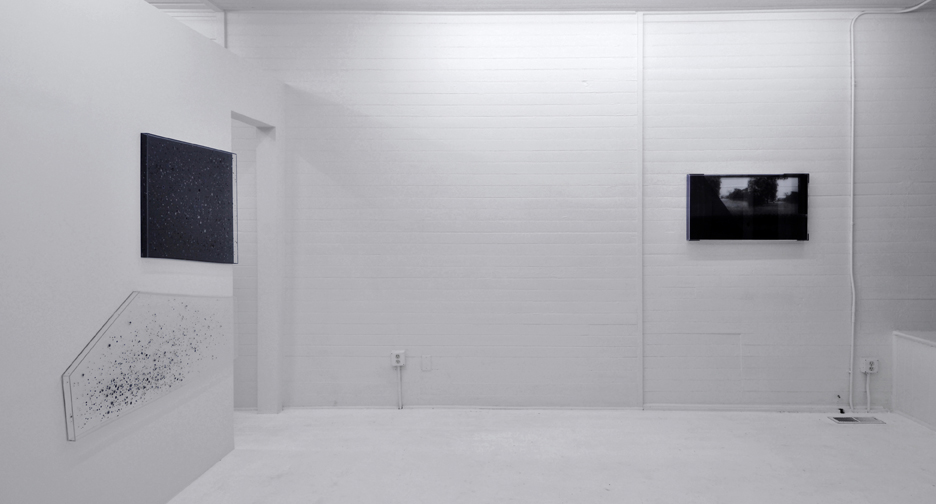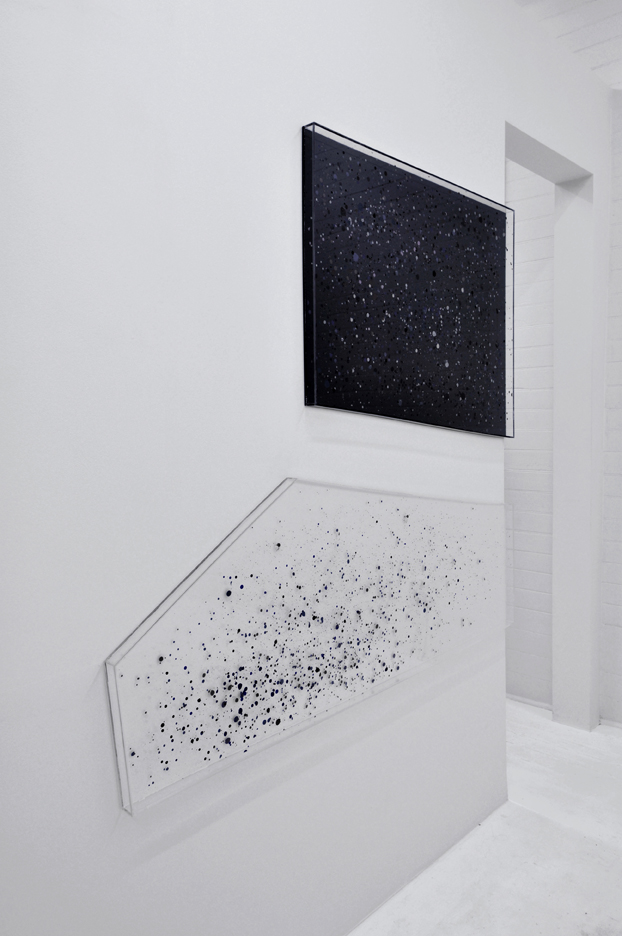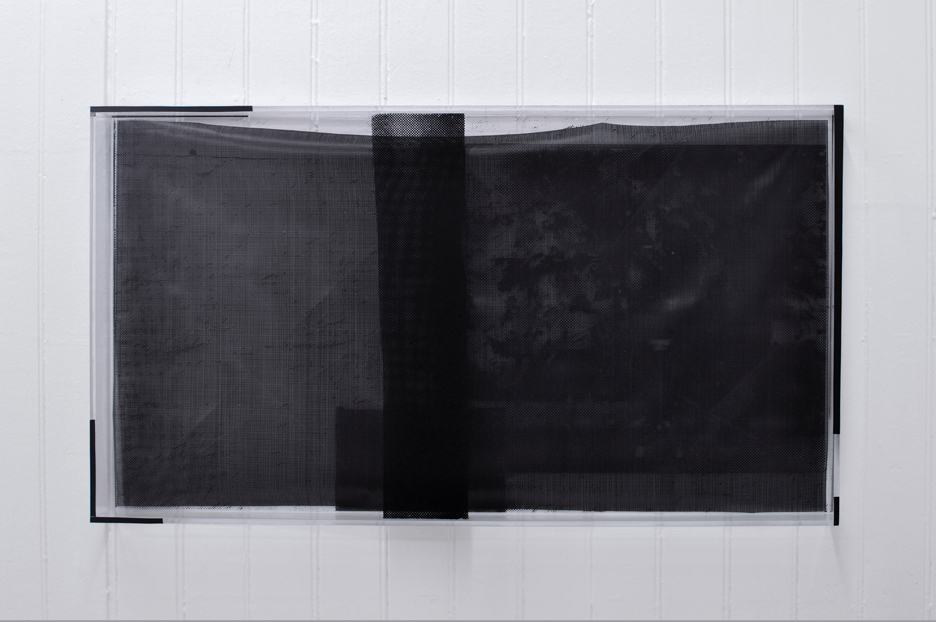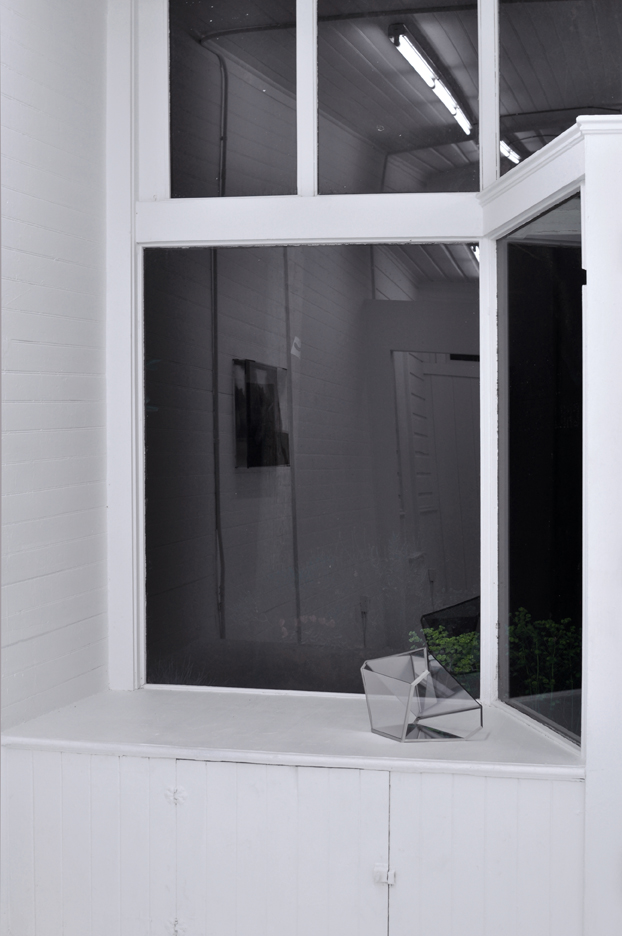













Mike Bray
Fragments of an unknowable whole
April 19–May 19, 2013
In his essay published on Bray in 2011, John Motley writes: “Picking up this ‘slack’ between the real and the represented occupies a central place in Bray’s work, in which he pulls the landscapes of filmic texts into the less well-lighted stages of the real world. The films that form the material basis of his art are obsessively studied, but not for narrative revelation. Instead, he zooms in on technical conventions, those formal aspects unique to the media that arbitrate the audience’s viewing experience and conspire to depict a believably life-like world.
When these conventions break down or fail to appear, when the world represented onscreen cops to its own construction, it foregrounds our escapist desires as viewers to suspend disbelief.” Motley goes on to describe the “impulse to conflate cinematic space with the real world illustrates a cultural desire to surrender to fantasy, to inhabit fictional places or wrestle their dramas into the uneventful lulls in our own lives. The nowheres of filmic worlds, which expand and contract to fit the whims of our imagining, are elastic enough to match the limitlessness of our desire. We treat the spaces of cinema as surrogate homes, as places we long to return to again and again, and, in doing so, hope to infiltrate some aspect of the infinite.”
Within Fragments of an unknowable whole, Bray explores Blowup’s main characters use of the camera to understand and experience events, as well as the comparison of the photographic 'evidence' in the film being compared to abstract painting. The exhibition consists of four wall-based works and one sculpture, with Plexiglass a main material component within each. Thomas looking at pictures I and II, are vitrines using clear acrylic, screen printing, scrim, film splicing tape and light gels, to create abstract representation of the photographer looking at photos. Grain I and Grain II are each a recreation of two abstract paintings depicted in the film reproduced in perspective and truncated by the films edge.Viewfinder is a small Plexiglass and nickel sculptural object, based on the pentaprism used in Nikon F camera to invert the image for the viewer.
Fragments of an unknowable whole
April 19–May 19, 2013
In his essay published on Bray in 2011, John Motley writes: “Picking up this ‘slack’ between the real and the represented occupies a central place in Bray’s work, in which he pulls the landscapes of filmic texts into the less well-lighted stages of the real world. The films that form the material basis of his art are obsessively studied, but not for narrative revelation. Instead, he zooms in on technical conventions, those formal aspects unique to the media that arbitrate the audience’s viewing experience and conspire to depict a believably life-like world.
When these conventions break down or fail to appear, when the world represented onscreen cops to its own construction, it foregrounds our escapist desires as viewers to suspend disbelief.” Motley goes on to describe the “impulse to conflate cinematic space with the real world illustrates a cultural desire to surrender to fantasy, to inhabit fictional places or wrestle their dramas into the uneventful lulls in our own lives. The nowheres of filmic worlds, which expand and contract to fit the whims of our imagining, are elastic enough to match the limitlessness of our desire. We treat the spaces of cinema as surrogate homes, as places we long to return to again and again, and, in doing so, hope to infiltrate some aspect of the infinite.”
Within Fragments of an unknowable whole, Bray explores Blowup’s main characters use of the camera to understand and experience events, as well as the comparison of the photographic 'evidence' in the film being compared to abstract painting. The exhibition consists of four wall-based works and one sculpture, with Plexiglass a main material component within each. Thomas looking at pictures I and II, are vitrines using clear acrylic, screen printing, scrim, film splicing tape and light gels, to create abstract representation of the photographer looking at photos. Grain I and Grain II are each a recreation of two abstract paintings depicted in the film reproduced in perspective and truncated by the films edge.Viewfinder is a small Plexiglass and nickel sculptural object, based on the pentaprism used in Nikon F camera to invert the image for the viewer.